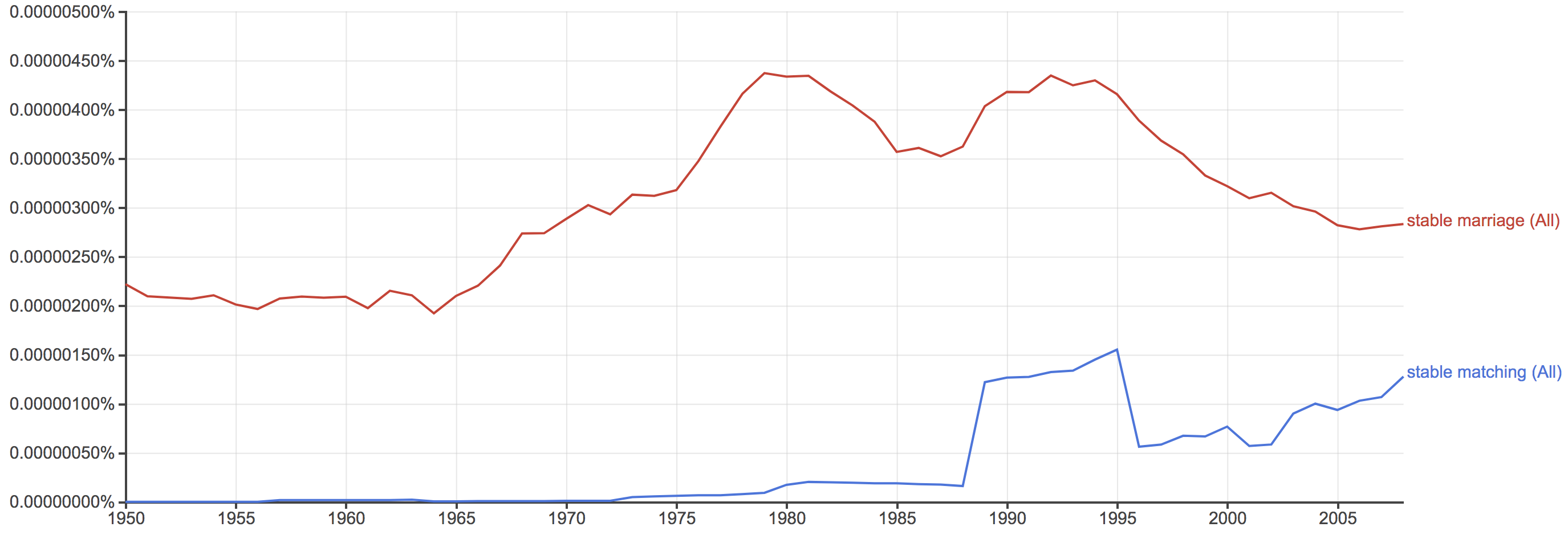Leap day linkage
-
Jeff Erickson links one of the first non-trivial straight skeletons (as a roof model), from Kotirte Ebenen (Kotirte Projektionen) und deren Anwendung by Gustav A. von Peschka (1877).
-
Indira Lara Chatterji has some nice open-licensed animated gifs of concepts in low-dimensional geometry and topology (\(\mathbb{M}\)).
-
Geometric art of Morton C. Bradley, Jr. (\(\mathbb{M}\), see also). As Joel Cooper writes, “I was fascinated first by the complex yet harmonious geometry of these forms, but it is really the use of color that makes these sculptures so transcendent. These sculptures are really exercises in color theory in three dimensions.”
-
Subliminal graph duals and using negative nodes to count (\(\mathbb{M}\)). These posts abstract a graph to a 2-polymatroid, the function that maps a subset of edges to the number of vertices it touches. This resembles matroid rank, but a single edge has rank 2. This leads to a notion of a dual, which usually does not come from a graph, with an interesting operation of “exploding” edges dual to edge deletion.
-
The latest Notices has profiles of mathematicians Fan Chung, Olga Taussky-Todd, and Dorothy Hoover (\(\mathbb{M}\)).
-
My graph algorithm lectures on stable matching have shifted their terminology and metaphors to stable matching from stable marriage (outdated, sexist, heteronormative, potentially offensive, and not a good fit for the applications) but so far Wikipedia hasn’t. Maybe the ngram below explains why: there’s a base level of colloquial usage of “stable marriage” masking the popularity of “matching” in technical usage. Google Scholar shows a clearer picture: 3940 hits for “stable matching” since 2016, 2710 for “stable marriage”. (\(\mathbb{M}\)).

-
Braid tiles (\(\mathbb{M}\)). Print your own onto cardstock, cut out, and rearrange, for all your hands-on braid-group experimental-mathematics needs.
-
Final report of the international project “A Global Approach to the Gender Gap in Mathematical, Computing, and Natural Sciences: How to Measure It, How to Reduce It?” (\(\mathbb{M}\), via), including recommendations for instructors and organizations.
-
The world’s second largest Wikipedia is written almost entirely by one bot (\(\mathbb{M}\), via). The language is Cebuano, from the Philippines. Consensus on the English Wikipedia is that automatic translation and automatic content generation are not good enough, but the different languages of Wikipedia are run independently and have different standards from each other.
-
You can encode complex numbers as pairs of real numbers, their real and imaginary parts, and perform complex arithmetic using only real-number operations. But can you go the other way, and encode real numbers somehow using complex arithmetic? Joel David Hamkins gives a simple proof of the folklore result that the answer is no (\(\mathbb{M}\)). The short reason why not: there are too few equivalence classes of k-tuples of them to use as representatives of the reals.
-
Polyhedra that can pack 3-space only in a non-vertex-to-vertex fashion (\(\mathbb{M}\)). The tiling by congruent convex polyhedra in Michael Korn’s answer is very pretty, but a proof that it is the only possible tiling by these polyhedra is still lacking (although it appears very likely to be true).